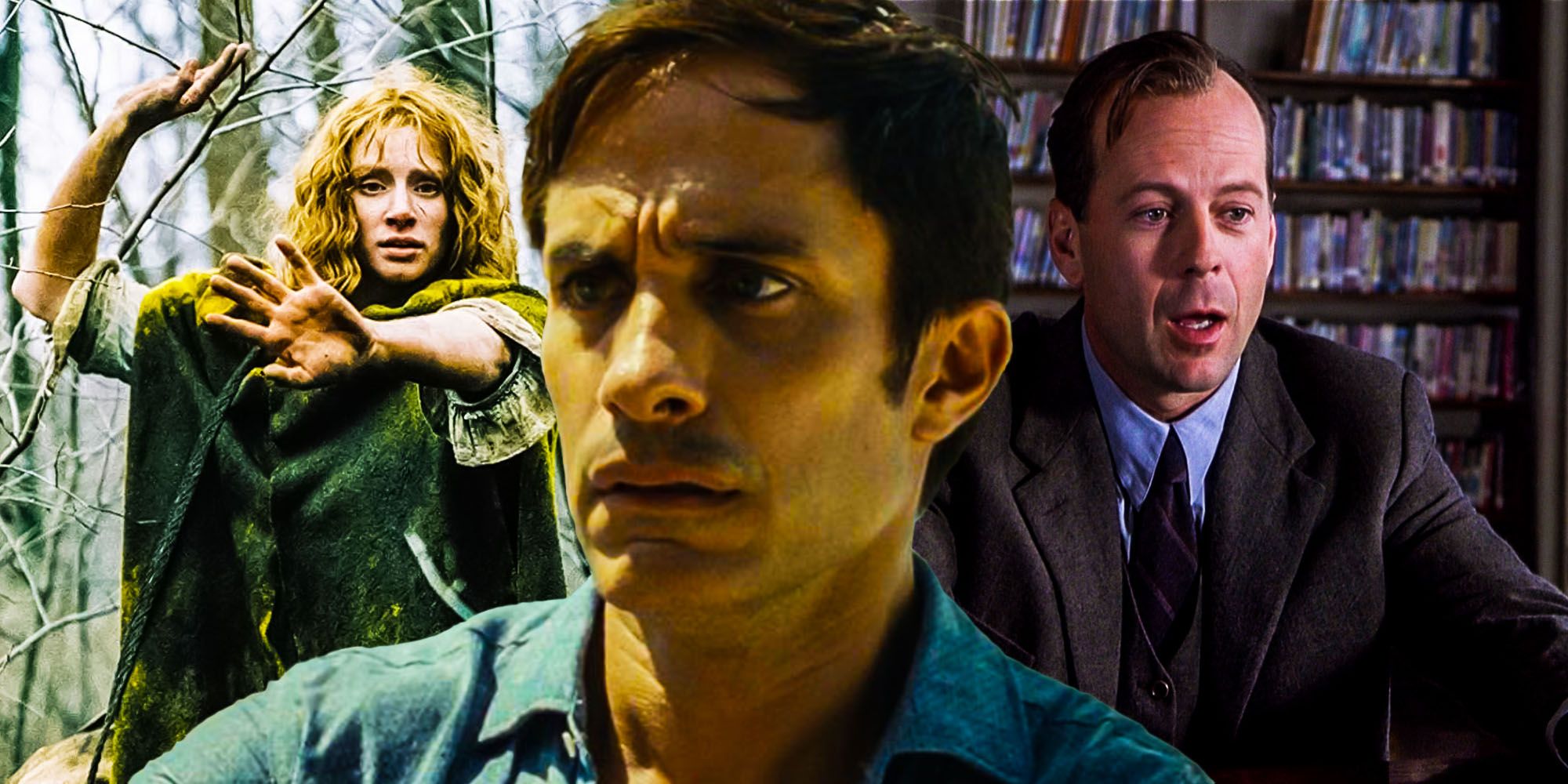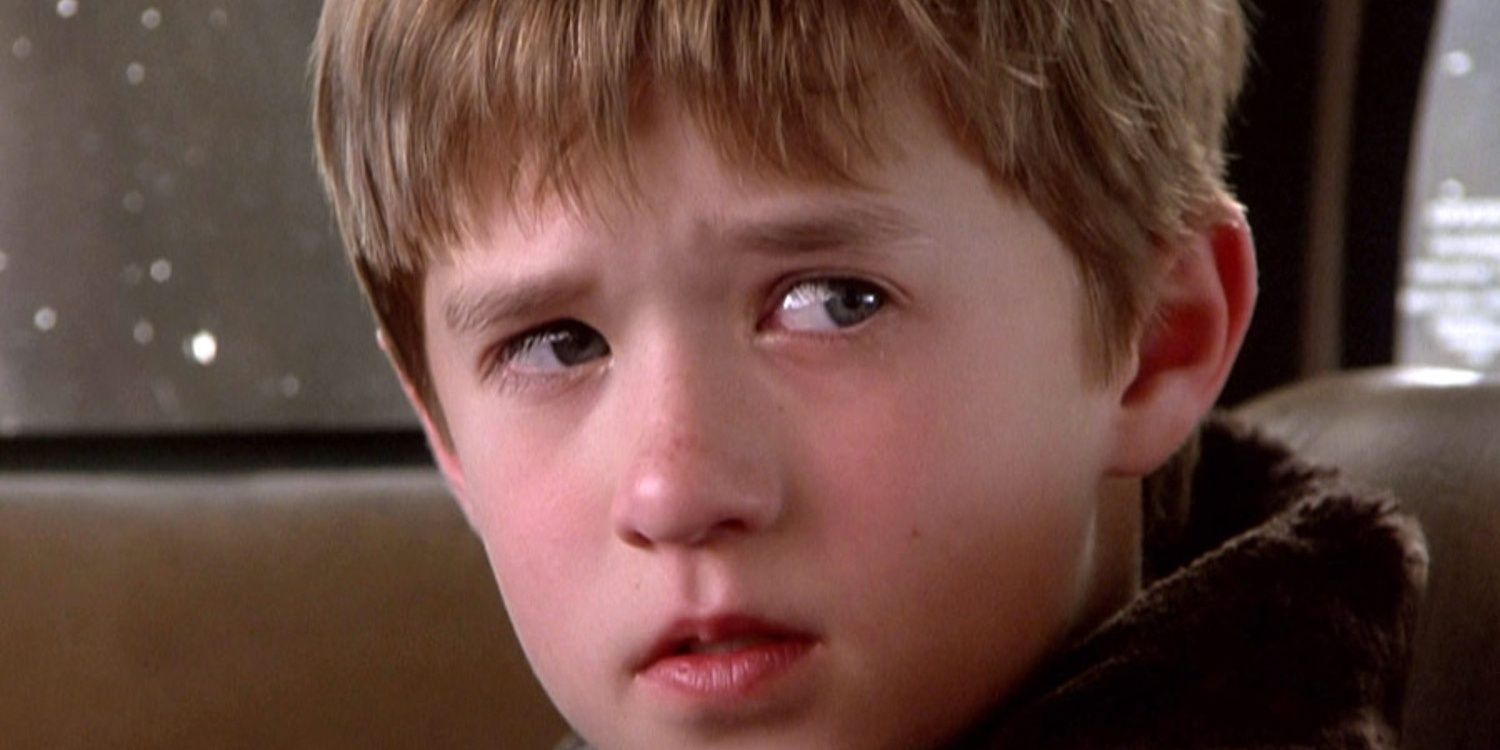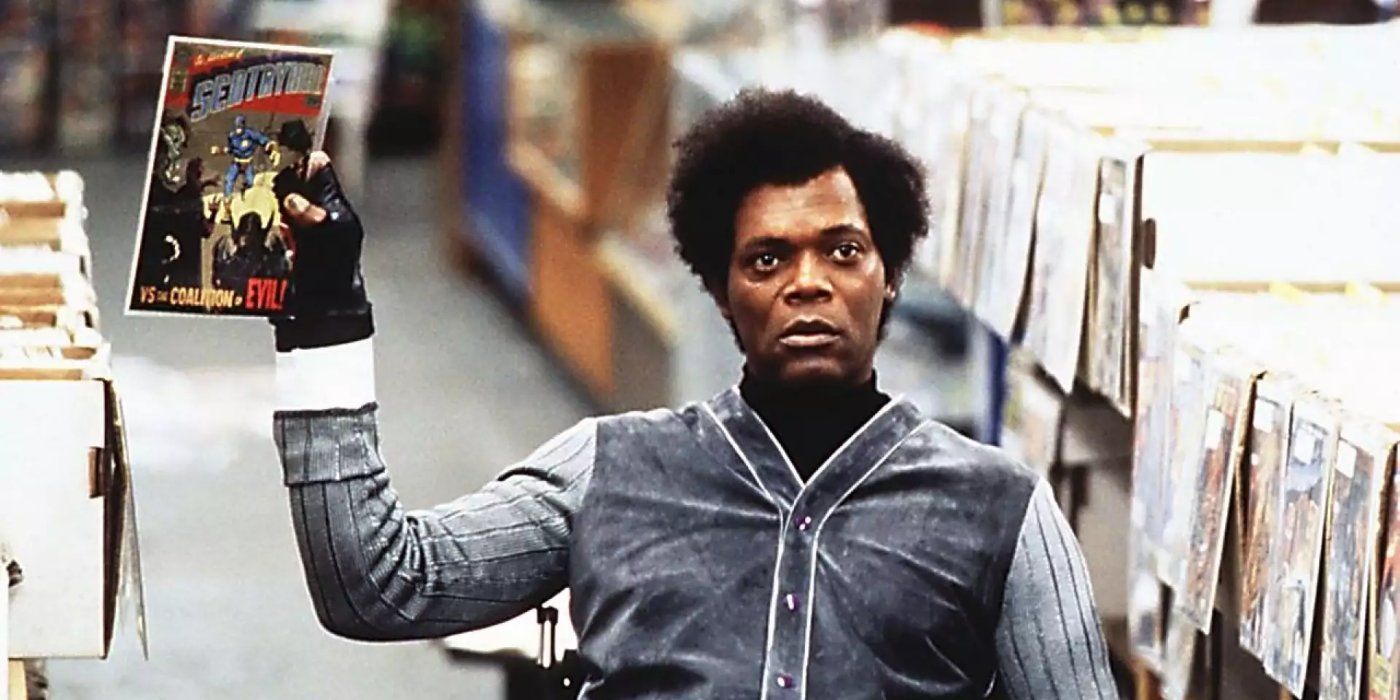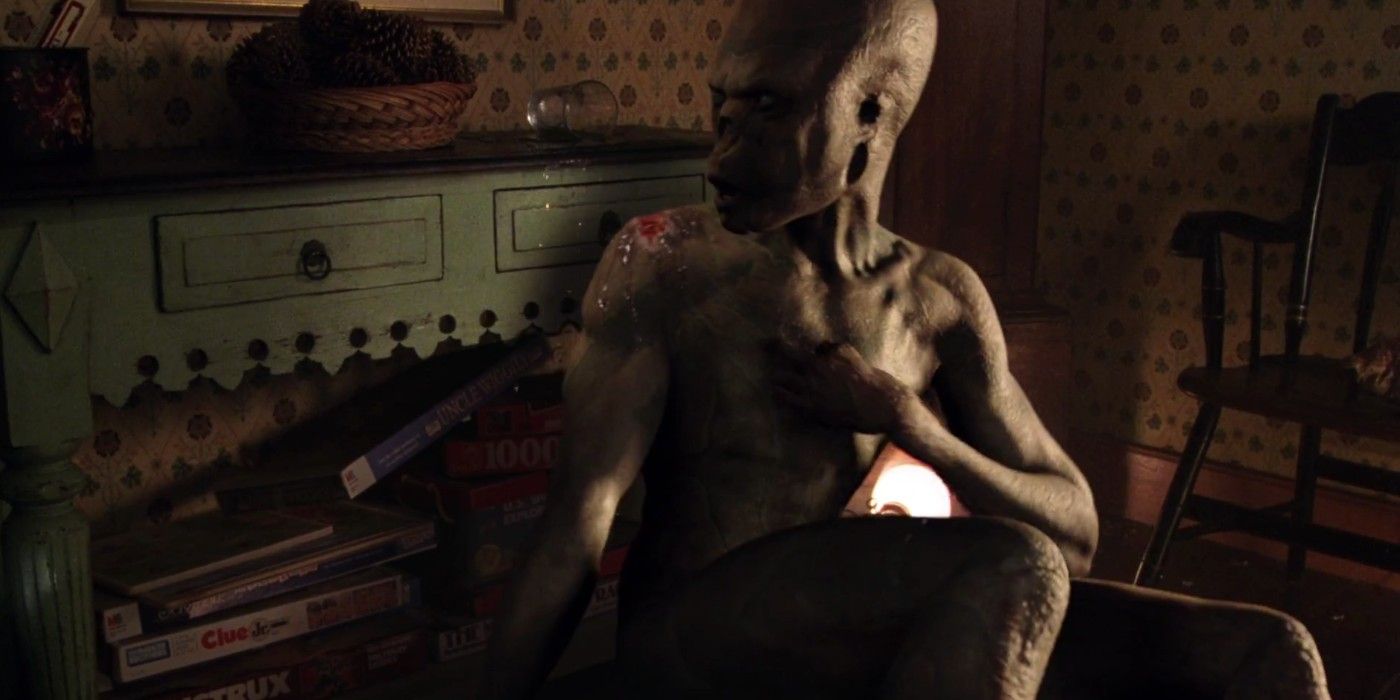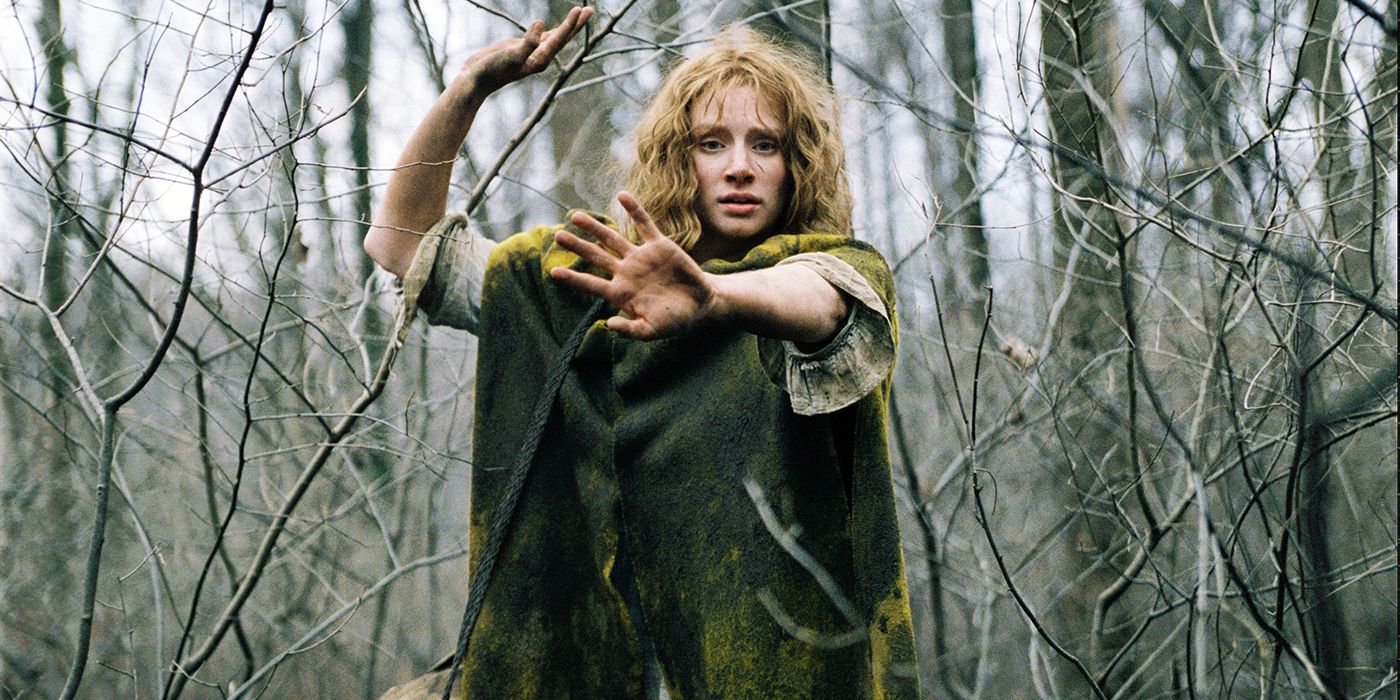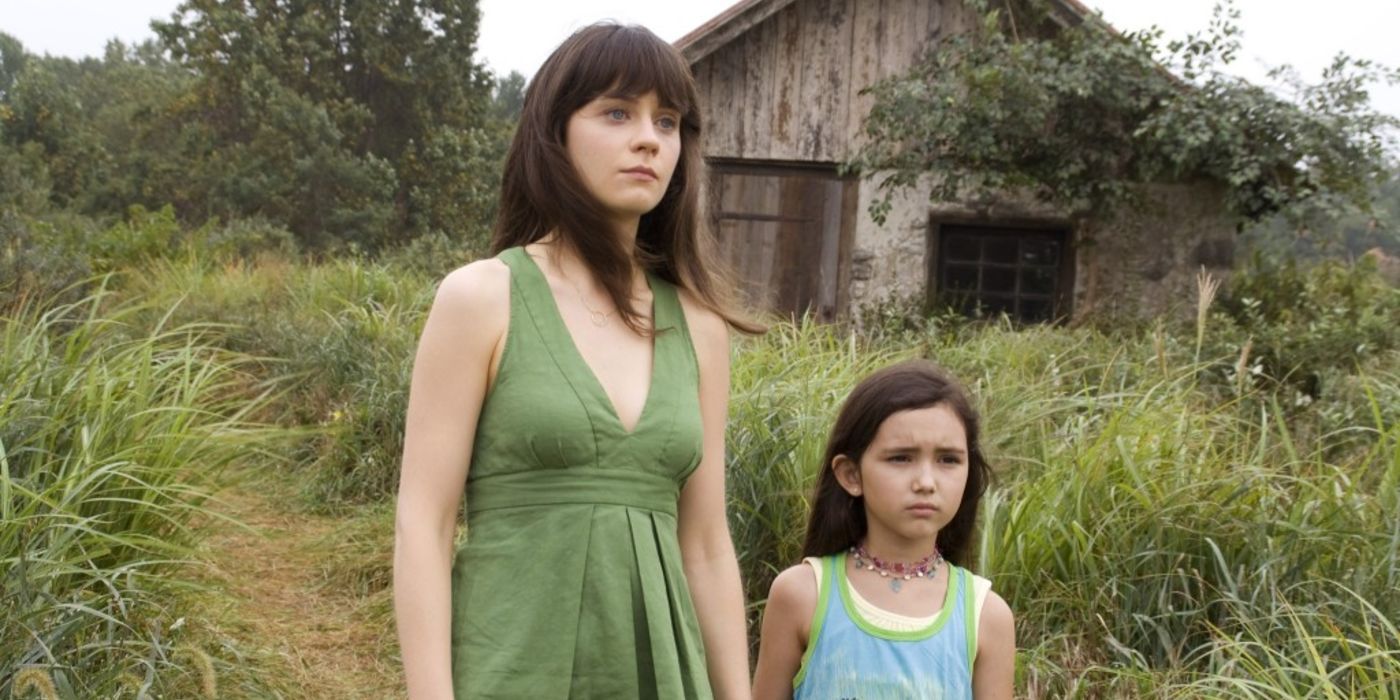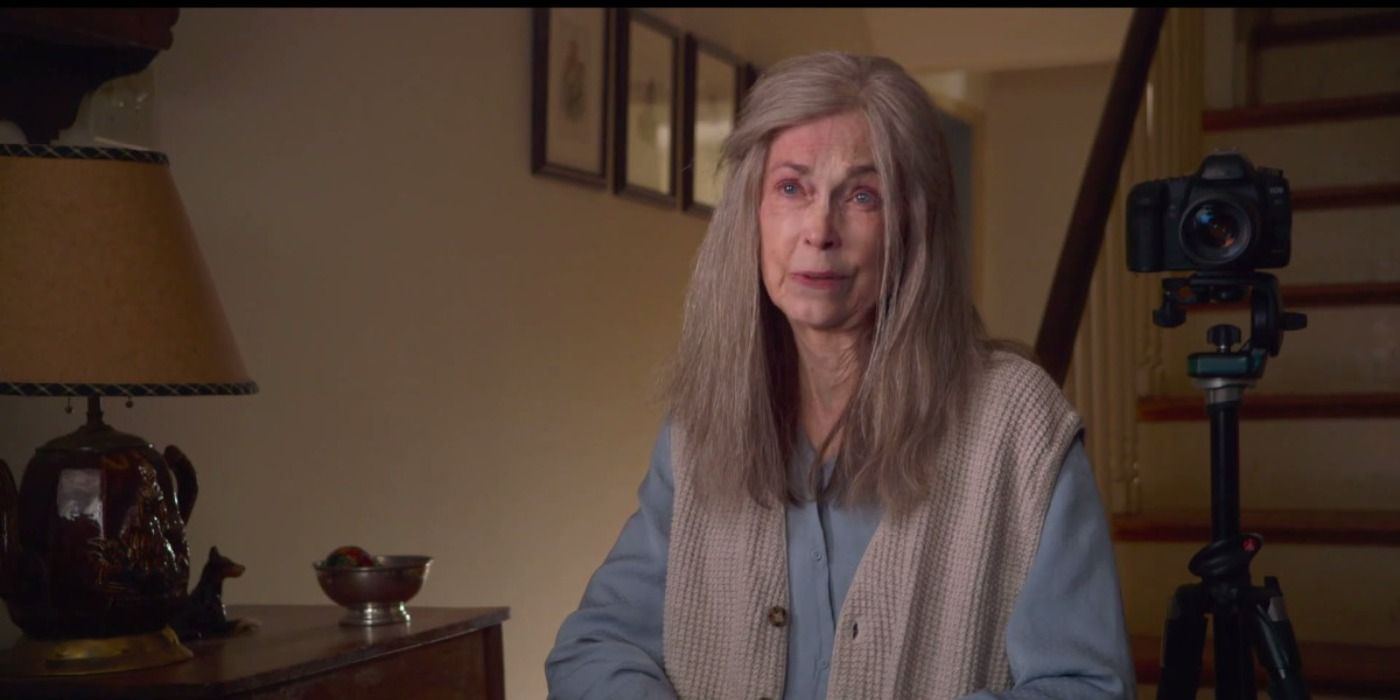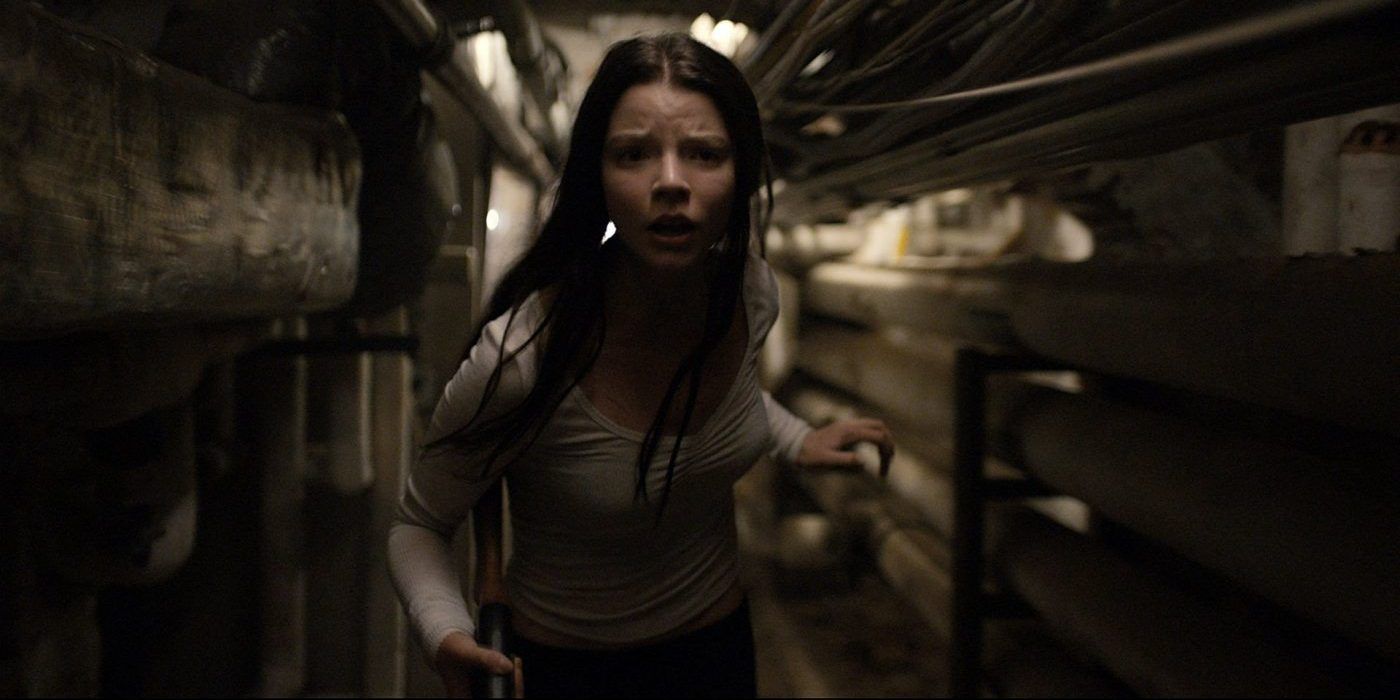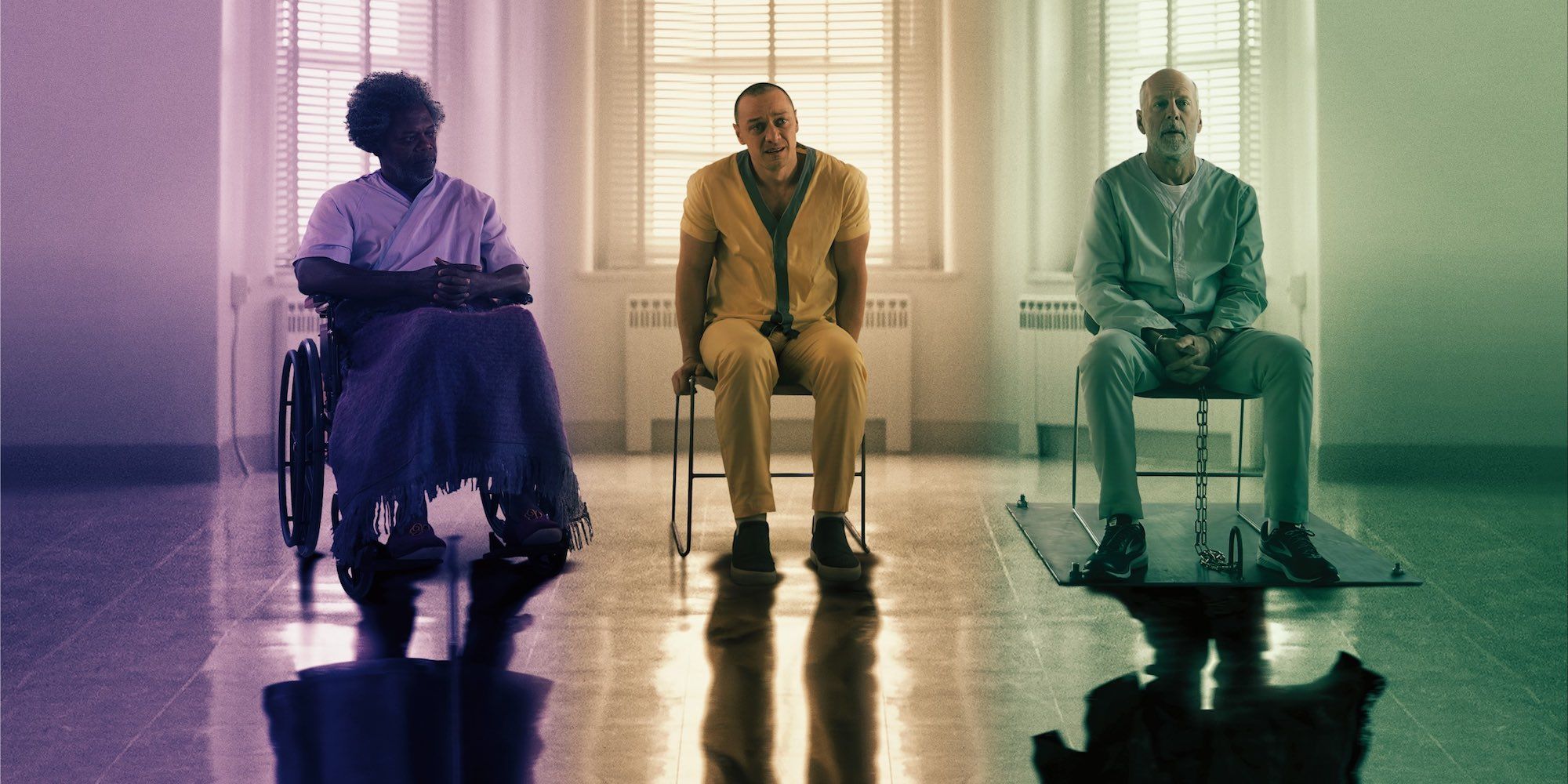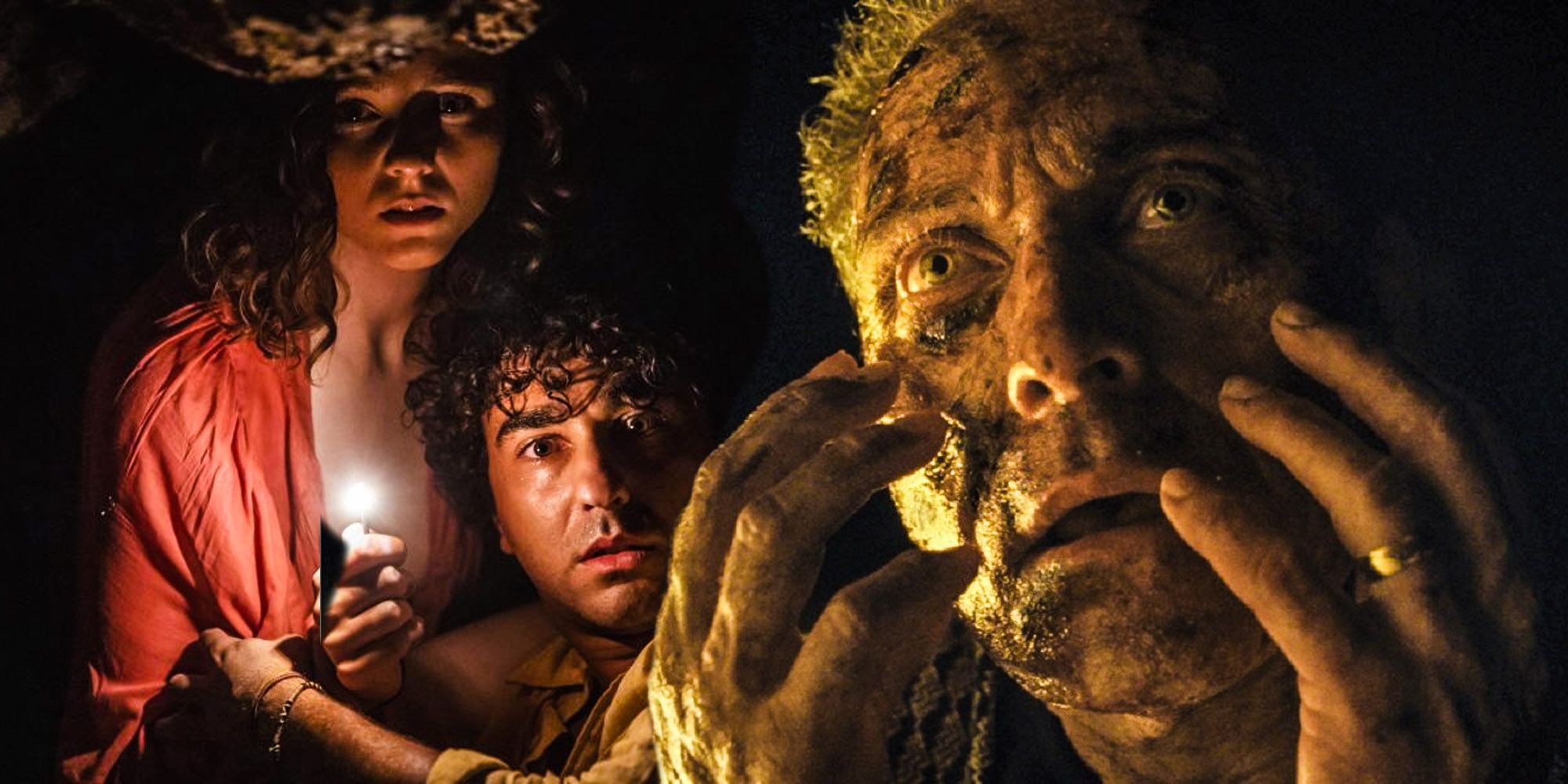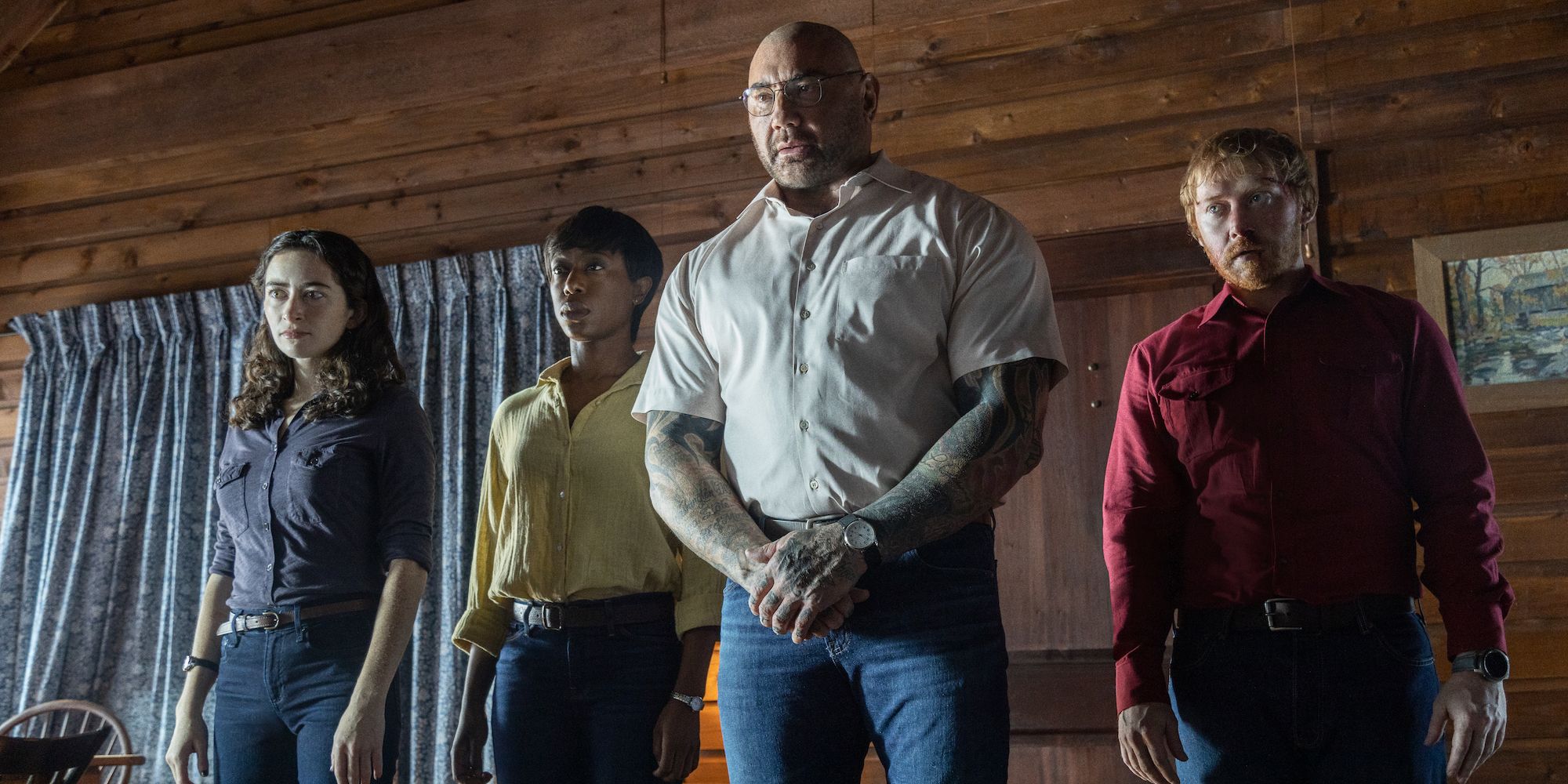The idea of an M. Night Shyamalan twist almost overshadows his talent as a filmmaker. When people watch his movies, it is almost a game to see what the reveals are that he hides in his movies. Released in 1999, The Sixth Sense was a wildly successful psychological horror from director Shyamalan. Although it was not the first film he directed, the Bruce Willis-starring blockbuster was his first huge hit and soon led to a career of impressive highs and some critically abhorred lows. However, it also contained a plot twist that no one saw coming.
Since The Sixth Sense shocked audiences with its last-second revelation, his movies have been synonymous with M. Night Shyamalan’s trademark twists. Some of these reveals, like that of Sixth Sense, have been ingenious; some, like those in The Happening, were hated by critics. The Shyamalan twists in The Village or Old left audiences divided, while the one in Knock at the Cabin intrigued even the author of the book Shyamalan adapted. With Shyamalan twists dividing critics between those who think it is charming, effective hokum and those who bemoan its lack of believability, there are still plenty that make sense, and some just don't add up.
The Sixth Sense—Bruce Willis Is A Ghost
The M. Night Shyamalan twist in The Sixth Sense is ingenious in its simplicity. The movie introduces Bruce Willis’ Malcolm Crowe, a psychologist haunted by his inability to save a patient who committed suicide in front of him. Crowe redeems himself by working with a small child who is plagued by visions of dead people, helping the boy understand and cope with his paranormal powers. In the end, when Crowe’s work is done and his young charge has accepted his gift, The Sixth Sense reveals its now-famous twist.
Crowe was a ghost the entire time, unbeknownst to himself. In a rapid-fire montage, the movie re-contextualizes numerous pivotal scenes (Crowe’s wife isn’t ignoring him, she’s grieving his death, the patient didn’t just commit suicide, he killed Crowe too, etc) to completely reshape the narrative after Crowe finally works out what is happening. The horror movie’s twist is famous because of how cannily Shyamalan’s story hides the fact characters don’t interact with Willis, with scenes beginning and ending at exactly the right moment to obscure the big revelation.
Unbreakable—Samuel L. Jackson Is The Villain
Throughout the action of Unbreakable, viewers are introduced to a pair of heroes; former quarterback turned security guard David Dunn (Bruce Willis) and eccentric comic book nerd Elijah Price (Samuel L. Jackson). As the story progresses, the enigmatic Price proves to Dunn he is no normal human, but rather a superhero who possesses both inhuman strength and an ability to see into the souls of others through touch. Unbreakable sees Dunn come to terms with his extra-human abilities with the help of Price, and by the time the plot reaches its denouement, Willis’ hero has come to realize he is a superhero after foiling an attempted murder.
Unbreakable's story subverts superhero tropes until it reaches an unusually happy ending for Shyamalan—then Price asks Dunn to shake his hand. That’s when Dunn realizes that Price engineered the circumstances that revealed his powers, including a train crash at the beginning of the movie that claimed 130 lives. This M. Night Shyamalan twist reveals that Jackson’s eccentric oddball is not a mentor, but rather a supervillain who dubs himself "Mr. Glass," the mastermind behind the story's many tragedies and an amoral monster who only unveiled Dunn’s abilities to fulfill his fantasy of being a comic book villain to someone else’s superhero.
Signs—The Aliens Are Allergic To Water
Signs is a chilling sci-fi horror that sees a family hole up in their rural farmhouse home and attempting to avoid invading aliens. Mel Gibson stars as Father Graham, an Episcopal priest who has lost his faith after the tragic death of his wife, a loss that has left him to raise their two young children. The family is besieged by alien invaders, but luckily, Graham’s immature baseball-playing brother Merrill Joaquin Phoenix) defeats the extraterrestrials in the movie’s infamously odd twist. Merrill hits an alien with a baseball bat, causing the invader to knock over a nearby glass of water and reveal the villains are deathly allergic to water.
The M. Night Shyamalan twist is not unlike the ending of HG Wells’ classic The War of the Worlds, wherein seemingly unstoppable Martians are felled not by military might or human ingenuity, but by the common cold. There is also a popular Signs fan theory that casts the aliens as demons, the water as holy water, and Merrill’s faith in himself/Graham’s faith in God as the deciding factor that bests the villains. It is a compelling reading that (while not officially canon) makes this one of Shyamalan’s more intriguing, symbolically dense twist endings - if viewers buy into the theory, that is.
The Village—It’s Set In Modern Times
The Village’s M. Night Shyamalan twist was panned upon release, but upon revisiting the horror mystery, the revelation - while somewhat surreal - is a timely piece of social commentary in the wake of 9/11. The Village appears, at first, to be a pretty standard period horror wherein the inhabitants of the titular 19th-century community are plagued by hooded monsters that stop them from escaping the self-contained town. Initially, it seems as though the setting is akin to that of The Witch or Fear Street: 1666, but The Village’s twist reveals that the film takes place in the modern day.
The monsters are just the community’s elders attempting to shelter their offspring and Shyamalan’s thriller is not a monster movie at all, but an allegory for the folly of trying to return to an idealized past. This infuriated filmgoers upon release, with critic Roger Ebert complaining that the twist ruined the movie, but in retrospect, it works quite well. Discovering the creature were invented by the elders to prop up their vision of a perfect community is a tragic, haunting premise that is far scarier than more conventional horrors, and the relevance of the plot’s Twilight Zone-style reveal makes this Shyamalan’s most underrated twist.
The Happening—The Plants Are Killing People
A few short years after The Village came 2008's The Happening, an ecological horror that remains one of Shyamalan’s least-liked. It opens with the sight of civilians killing themselves en masse, with the sudden mass suicides having no apparent cause. Soon, viewers are plunged into a post-apocalyptic thriller as Mark Wahlberg and Zooey Deschanel attempt to work out what is happening. The M. Night Shyamalan twist is that plant life is releasing a toxin that causes humans to kill themselves as revenge for environmental catastrophe. The toxin doesn’t kill all the characters and abates by the end, but not before mankind has learned its lesson.
The Visit—“Those Aren’t Your Grandparents”
2015’s The Visit features a predictable M. Night Shyamalan twist. Two teens visit their estranged grandparents while their mom is away to find their grandparents acting at best erratically or at worst, homicidally. The twist is, as their mother played by Kathryn Hahn (WandaVision), finally says, “those aren’t your grandparents”. Instead, they are a pair of escaped mental patients who seamlessly replaced them shortly before the movie began. While the twist of The Visit doesn’t detract from this horror-comedy, it is a rare Shyamalan reveal that many noted relied on dramatic irony, since many viewers guessed it before the characters did, something the director has largely avoided throughout his career.
Split—It’s An Unbreakable Sequel
In a significant shift away from The Visit’s approach, wherein the twist is only a surprise for the characters in the movie, 2016’s Split saw Shyamalan pull off his first ambitious meta-twist. The plot follows Anya Taylor-Joy and her doomed friends as they are kidnaped and imprisoned by a personality-shifting man played by James McAvoy. For most of the runtime, Split unfolds like a psychological horror as viewers learn more about the disturbed villain’s condition and watch his captives attempt to escape.
However, the closing scenes feature a surprise reveal that re-contextualizes Split’s story—it is a sequel to Unbreakable. Split’s ending reveals McAvoy’s most dangerous alter ego, The Beast, to be a superhuman monster, and shortly after his crimes are revealed to the world, it cuts to a diner where a waitress comments that the scale of his ambitious misdeeds reminds her of an older criminal. Cue the appearance of Bruce Willis' David Dunn, who reminds her that his name was “Mr. Glass.”
Glass—They Really Are Superheroes (And They All Die)
Shortly after the unexpected success of Split at the box office (and with critics), Shyamalan began working on an ending to his superhero trilogy that began with Unbreakable. Now that the ending of Split revealed David Dunn was alive and awaiting the return of Mr. Glass, 2019’s Glass needed an new reveal. This came in the form of the movie opening in a mental institution, wherein Sarah Paulson’s beleaguered psychologist attempts to convince the trio of David Dunn, Elijah Price, and McAvoy’s Split villain that they are not, in fact, superheroes. The second twist then complicates things, resulting in one of the most divisive M. Night Shyamalan twist to date.
First, the trio escape, and the stage seems set for a face-off between Price and Dunn. Instead, a clandestine organization kills them all in the building's car park. It is a bizarrely bleak denouement that sees the superhero and the two supervillains offed shortly after they escape, making much of Glass’ plot pointless. However, this surprise is followed by a third, final twist, wherein Anya Taylor-Joy’s heroine receives proof of the existence of superheroes from the late Price and decides to show it to the world. This lightens up the hopeless coda somewhat, but it remains a mean-spirited anticlimax that many felt was a twist for the sake of one.
Old—It’s All Part Of A Clinical Trial
The M. Night Shyamalan twist in Old is the latest case of the director polarizing audiences with a last-minute reveal. The mystery thriller is adapted from the graphic novel Sandcastle, but notably, the surprise is one added by Shyamalan that is not present in the original story. The plot follows a family and a group of assorted holidaymakers who arrive at a secluded beach only to discover that the mysterious environment is causing them to rapidly age—and there’s no way to leave. This surreal premise is never explained in the source material, but Old’s movie ending offers a smart explanation.
However, in the movie, Shyamalan adds a twist that reveals the beach is a testing ground of sorts for experimental drugs. With the beach itself rapidly aging its inhabitants, a nefarious drug company has been able to harness this freak occurrence to compress lifetime drug trials into a single day. It is one of Shyamalan’s stronger reveals, but some fans of the graphic novel preferred its ambiguity and did not want the beach’s supernatural powers explained. As a result, Old became the latest in a long line of divisive endings from the director.
Knock At The Cabin—The Apocalypse Is Real (And The Sacrifice Works)
Knock at the Cabin didn't seem to have a twist. The movie had a group of four home intruders who had visions of the upcoming apocalypse and told the couple that they captured they had to sacrifice a member of their family to save the world. The change came with the alteration of Knock at the Cabin's ending. The book it was based on, The Cabin at the End of the World, had the couple accidentally killed their adopted daughter, but the apocalypse never ended. There was no saving the world.
That seems dark, but the end of the movie shocked even the author of the book, who said the movie was darker than his story. His story was about true love, and the two men left together, losing their daughter, but remaining in love despite the sacrifice not stopping the apocalypse. The M. Night Shyamalan twist in the movie is that the couple did sacrifice one of themselves, and the apocalypse actually ended. While some fans of the book disliked the change, it gave it a rare Shyamalan hopeful ending, even though it killed the love story.

